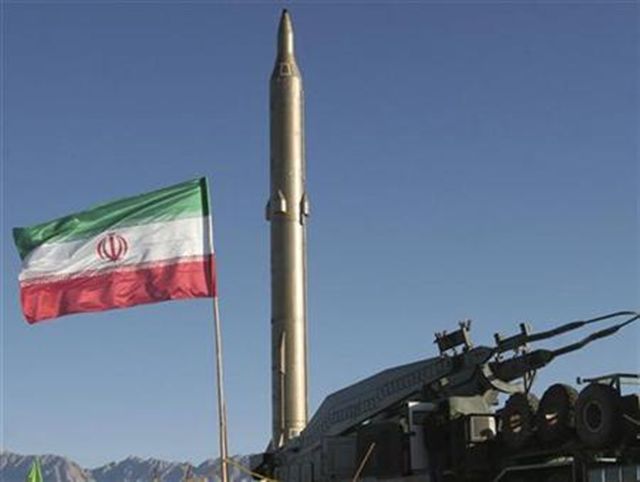
The Impossible Dream: Tehran Rethinks its Commitment to an Iranian-Built Aircraft Carrier
Publication: Terrorism Monitor Volume: 9 Issue: 45
By:

In late September, the Iranian navy announced it would build an aircraft carrier with the capacity to engage in defensive military operations in the Persian Gulf (Press TV September 28; Fars News, September 28), The statement came as the Iranian navy also announced the near completion of Jamaran 2, a more advanced 2010 version of Jamaran 1 (an Iranian-built Mowj-class guided-missile frigate that Iran likes to style as a destroyer), armed with anti-ship, surface-to-surface and surface-to-air missiles. Jamaran 1 is currently on a mission in the Indian Ocean and the Gulf of Aden (Fars News September 28, 2011; Press TV, November 27, 2011). From the Iranian view, the design and construction of an aircraft carrier would be part of a growing indigenous weapons technologies industry that is increasing Iran’s missile capabilities and expanding Iran’s naval operations well beyond Iranian maritime territories and into the Atlantic and Indian oceans (see Terrorism Monitor, November 4). Along with the production of three domestically-built Ghadir-class midget submarines for littoral use and the equipping of naval vessels with Iranian-made marine cruise missiles like the Qadar, the construction of an aircraft carrier would signify a major step in the expansion of Iranian naval power (Press TV, November 28, 2011; Fars News November 30, 2011).
Nevertheless, the November 25 announcement by Navy commander Admiral Habibollah Sayyari, that the Iranian navy has halted its plans for the production of an aircraft carrier came as a surprise (IRIB Radio, November 26). The announcement raised a question: If the Iranian navy is purportedly capable of building an aircraft carrier, then why discontinue the development of naval technology that could expand the country’s naval presence in international waters? At first glance, the answer lies in the fact that Iran does not have the capability of building technologically advanced carrier-based planes specifically designed for maritime operations. Iran’s aging fleet of largely American and Soviet-built fighter jets are land-based. There is also the problem of other technologies used to build a carrier, like arresting cables or aircraft catapults, which are mostly built in Europe or the United States. Under the current sanctions and given this equipment’s sensitive security nature, Iran might be unable to find these technologies, even in the black market.
The main reason for Iran’s halt to the aircraft carrier project lies in the fact that the country’s navy does not really need one. There are three reasons for this:
- While Tehran has been eager to display its naval power in international waters, including the Red Sea and the Indian and Atlantic Oceans, such naval activities have been mainly a symbol of advancing Iran’s “Soft War” strategy adopted in September 2009 (see Terrorism Monitor, June 12, 2010; November 4, 2011). Soft War activities are meant as psychological operations to impact domestic and global public opinion. In many ways, Iran is keen to portray its abilities as greater than what they might be in reality, partly to foster psychological strength within its military forces, whose younger members have undergone major educational and ideological training in Soft War operations since 2009 (IRNA, October 8, 2011).
- The second reason for abandoning the construction of an aircraft carrier is Iran has made it a priority to develop conventional missiles capable of causing serious damage to U.S. aircraft carriers in the event of an attack.
- The Iranian naval strategy also relies heavily on asymmetrical warfare, which obviously does not require a mobile naval base for air attacks beyond the Persian Gulf. Carriers are also both costly and vulnerable to superior American air power. Tehran is fully aware of this reality and makes sure that its rhetoric regarding naval power mainly is limited to missile capabilities and, more importantly, its grander Soft War objectives.
The Iranian navy will soon launch a major naval exercise, named Velayat 90, with the aim of displaying its naval power to the United States and Arab nations in the Persian Gulf (Tehran Times, November 26; Press TV, November 28). While this is not the first naval exercise that Iran has conducted in recent years, Velayat 90 will most likely display Iran’s more advanced naval weaponry systems, including its missile and swift boat capacities, signalling Iran’s continued focus on using combined conventional and asymmetrical military operations with the aim of deterring a possible U.S. attack. In strategic military terms, an aircraft carrier does not fit the Iranian military trajectory, though it would certainly serve Tehran’s growing Soft War strategies aimed at increasing domestic support and waging psychological warfare against its foes, especially its neighbors in the Persian Gulf.
Nima Adelkhah is an independent analyst based in New York. His current research agenda includes the Middle East, military strategy and technology, and nulcear proliferation among other defense and security issues.





